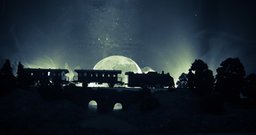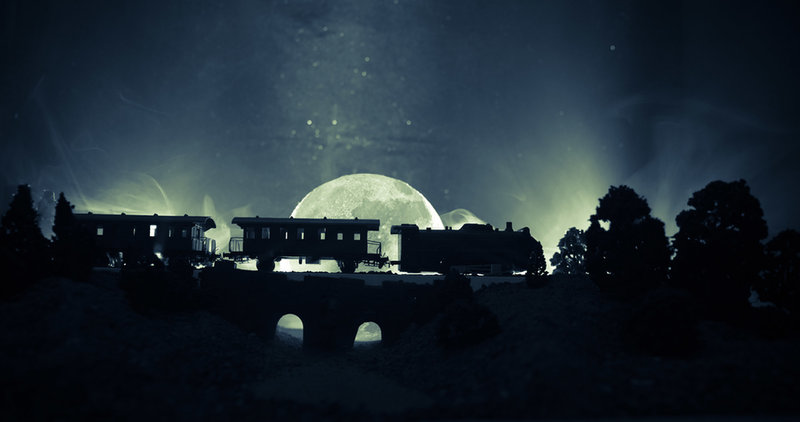All images: Max Bögl
Trains
On the night train
Sleeper trains in Europe are seeing a new dawn in popularity, according to industry experts. Whether it’s for environmental reasons or pleasure, more passengers are choosing a comfy bunk over a short haul flight. Frankie Youd gets down to brass tracks with rail experts.
The popularity of night trains within Europe is on the rise with many preferring to travel overnight via train than plane on a short haul flight. With 2021 being the European Year of Rail paired with the ever-growing importance of tackling the climate crisis, the promotion of night train use is a prominent example of how to travel in a sustainable, environmentally friendly manner.
Hosted by German political foundation Heinrich Böll Stiftung, the ‘Night time on European Rails: The rise of night trains in Europe’ conference saw panellists discussing the past, present, and future of overnight train travel as well as some of the setbacks that operators are currently facing.
SkedGo CEO John Nuutinen. Credit: Skedgo


MOTIONTAG managing director Fabien Sauthier. Credit: MOTIONTAG
Night trains vs planes: Slow and steady wins the race?
For generations, overnight trains were the most popular means of travel around Europe. But the arrival of budget airlines in the 1990s saw short haul flights become far more popular, because flying was the fast, affordable and convenient means of travel.
One of the main disadvantages of overnight trains comes down to tax. At present there is no sales tax for international air tickets, paired with this the aviation sector is not required to pay tax on aviation fuel. Night trains became an expensive luxury, compared to cheap flights.
However, as the night train sector began offering cheaper fares to encourage travellers to bunk with them, further problems emerged. Rail industry insider and ‘The Man in Seat 61’ website founder Mark Smith explains: “When the railways and the night trains lost traffic to the airlines it meant that they had to compete by offering their own cheap fares - but that's got two effects. It means your revenue per passenger goes down as you're trying to compete.”
As well as competition from the aviation industry, slow, leisurely sleeper services were also hammered by high-speed trains. Although a positive for the development of the rail sector, the introduction of high-speed trains and lines, brought about what Smith described as an “honourable natural death” for some short distance night trains.

Credit: SkedGo | MOTIONTAG
Reduce your carbon footprint while you sleep
Trains are considered to offer one of the cleanest, most environmentally friendly modes of travel. According to independent research carried out by Eurostar, a return journey from London to Paris via Eurostar would produce 22kg CO2 per passenger - 91% less than the 244kg of CO2 produced by an equivalent return flight.
Climate change and environmental concerns are top of the publics’ agenda, so the decision to travel by rail to reduce carbon dioxide emissions is also a driving factor for the resurgence of night train popularity.
Smith says: “When I started ‘Seat 61’ twenty years ago, if people gave me a reason for travelling long distance by rail, instead of air, they would typically say they had a fear of flying, or they were medically restricted from flying.
“What they now tell me is that they are fed up with the airport and airline experience, and they want to cut their carbon footprint.
“Now I can't tell whether it's 80%, the former and 20% the latter, or the other way around, it probably varies - I think a key thing is that it's both things. If we want to get people on the trains, it's about the experience as much as cutting one's carbon footprint.”
Nightmares
Night train services face several hurdles, like high maintenance costs and track access charges, that they need to overcome to offer an affordable service. But the biggest issue is the availability of rolling stock.
The economics of night trains are more complex than other services within the industry, due to them needed special rolling stock, like sleeper cars, or those with beds and couchettes. These carriages
will only provide one loaded journey for 24 hours, in comparison to a day train which will be transporting passengers up and down the track all day – no passenger will want to wait for and board a night train at 3am.
One suggestion which has been presented is a leasing pool of night trains, Smith explains: “A leasing pool of night trains is going to be tough for new entrants trying to find rolling stock to start up night trains, and with a high capital cost. It's going to be much more difficult to start up a night train than it is to lease an airliner and start up a flight.”
Changing Track
Track access charges present a major issue to the night train sector. When they first rose in popularity, integrated operators who ran the track and the trains knew that if a track and signalling system was fully staffed, an extra train could be run for no added cost. This saw night train’s running for fundamentally no extra charge.
However, as the sector developed a company for running infrastructure and a company for running trains were introduced, track access fees began appearing on the balance sheet for the night trains, making them in some cases more expensive to put on as a morning commuter service.
Smith says: “Track access fees have been cited as a key factor in pushing some sleeper trains over the edge, including the Paris to Kiev sleeper train. But you notice that all the track and signalling is still there fully staffed, so you have to ask what the saving is.”
This issue can only be solved by having a multi system locomotive so that's not an easily solved problem - all of this is additional cost and effort.
Border crossings also present issues for operators. If a sleeper service is crossing from Vienna to Brussels, the first problem that is encountered is the European train control and security system (ETCS). When reaching the German border, the locomotive will need to be changed as well as adhering to international regulations set out by Belgium.
Veronika Haunold, EU & international affairs manager, Austrian Federal Railways (ÖBB) explains: “At the German border we have to change locomotives, and then while this train is operating in Belgium the regulations state that doors can only open on one side of the train where the people will disembark. There is no such rule in Austria, Germany, but I need rolling stock and locomotives that allow me to follow that rules to operate in Belgium.”
Alongside the issue of ETCS, loading axels must be considered when crossing borders. In Belgium regulations state that locomotives are prohibited from pulling ÖBB waggons, so a different set of rails must be taken which adds additional time to the journey.
Haunold explains: “This issue can only be solved by having a multi system locomotive so that's not an easily solved problem. All of this is additional cost and effort for a company to set up a night train connection.”
Getting on the right track
When it comes to addressing these issues currently faced by the sector, Carl Adam Holmberg, head of night train service Snälltåget, stated that more long term solutions need to be found rather than quick fixes.
Holmberg stressed the importance of understanding rail passenger’s wants and needs as key to ensuring successful future for the night train sector. Understanding varying demand is vital for the industry – demand varies during the week as well as being impacted by seasonal effects.
Holmberg commented: “If you understand the customers and what they are willing to spend and what comfort they want, then night trains can be profitable.”
Paired with understanding passenger needs, the current fragmented booking system which is available for night train passengers could potentially act as a deterrent.
Anna Deparnay-Grunenberg MEP, Greens/EFA Group, rapporteur for the European Year of Rail 2021 explains: “We need simple, easy booking, passengers need easy to find information on night trains-it's too difficult to find and book night trains today. Night trains are a great mode of transport, connecting us geographically, but they are also an interesting meeting point for exchanging our ideas.”
Main image: The future looks bright for night trains. Credit: Shutterstock